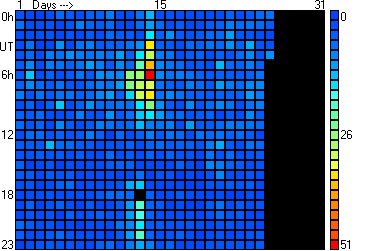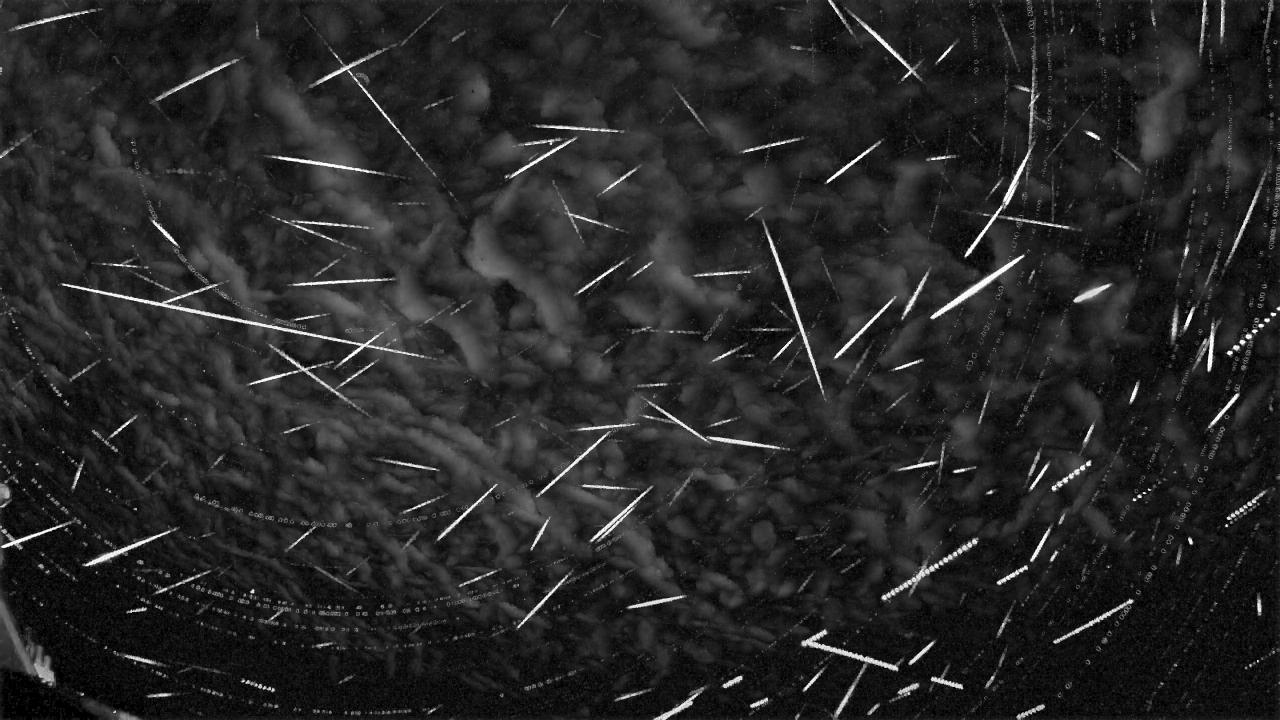While capturing meteors on camera is one way of detecting them, there is another way and that is by using radio waves. This technique is referred to as radio meteor detection. The underlying principals of the technique are outlined below in a figure from the website meteorecho.com.

There are two different transmitters I use as part of my radio meteor detection. The first is the GRAVES (Grand Réseau Adapté à la Veille Spatiale) transmitter (radar) near Dijon (Burgundy) in central eastern France. The second is the UK Radio Astronomy Meteor Beacon – GB3MBA, which is located at the Sherwood Observatory of the Mansfield and Sutton Astronomical Society (MSAS), Nottinghamshire, England. There is a third transmitter in Belgium which is operational, BRAMS (Belgian RAdio Meteor Stations), but it is not one I use to detect meteors (yet…).

1. GRAVES
The GRAVES radar is operated by the French Air Force. This radar is particularly well adapted for the detection, identification, and tracking of space targets including incoming meteoroids. The radar system transmits on 143.050 MHz in a continuous wave (CW) mode 24 hours a day.
To detect meteors using the GRAVES transmitter I built myself a 3 element Yagi antenna (see images below) using instructions published in the Society for Popular Astronomy.

3 element Yagi antenna
Yagi antenna in my attic
AIRSPY-SDR
SpecLabUsing my home made antenna, itself connected to an RTL-SDR (software defined radio), along with two pieces of PC software (shown above – AIRSPY-SDR and SpecLab), I am now able to detect meteors and upload count data, also referred to as heatmaps, to the Radio Meteor Observing Bulletin (RMOB). as contributor – Stephen Grimes.
A. Some of my favourite radio meteor detections using the GRAVES transmitter are shown below. Time is reported relative to Coordinated Universal Time (UTC).

13:36:45 UTC on the 13th Febuary 2024.
A fairly common kind of echo with a distinct head echo with rapidly changing doppler shift followed by a tail echo of 2 seconds exhibiting spectral spread and little doppler shift.

07:47:55 UTC on the 22nd Febuary 2024.
A head echo showing mainly positive doppler shift reducing to zero. No discernible tail echo observed.

09:43:21 UTC on the 23rd Febuary 2024.
A relatively rare example of an overdense meteor echo. Overdense meteor echoes can take many complex shapes. This I believe is an example of a “C meteor echo”.

13:06:17 UTC on the 29th Febuary 2024.
A less common kind of echo with a faint head echo with rapidly changing doppler shift followed by a tail echo of 1.5 seconds exhibiting spectral spread and quite a bit of both positive and negative doppler shift.

17:16:54 UTC on the 5th March 2024.
A small head echo with no discernible tail echo.
The long angled echo is most likely reflections from an aircraft.

07:35:17 UTC on the 10th March 2024.
Two, possibly three, detections here. The first has a small head echo with no discernible tail. The second has a very faint head echo followed by a tail echo of 1.3 seconds exhibiting strong spectral spread.

08:23:36 UTC on the 11th March 2024.
An example of a overdense meteor echo displaying multiple branches, or meteor tails. No discernible head echo. Apparent interruption in the meteor tail is likely due to the sweeping radar nature of the GRAVES transmitter.

17:46:51 UTC on the 20th March 2024.
An echo with a distinct head echo with rapidly changing doppler shift followed by a tail echo of 1.5 seconds exhibiting spectral spread and some negative doppler shift.
B. The GRAVES hall of fame gallary



























2. GB3MBA
GB3MBA is the UK meteor beacon located at the Sherwood Observatory of the Mansfield and Sutton Astronomical Society. It’s construction, by volunteers, was funded by the Radio Society of Great Britain and its running costs are supported by the British Astronomical Association.
The beacon “illuminates” a region with a diameter of about 400km centred on it’s location near Mansfield. The beacon transmits at a frequency of 50.408MHz.
To detect meteors using the GB3MBA transmitter I built myself a moxon antenna (see image below) using a range of designs, including this one.

Using a separate SDR, along with another PC running AIRSPY-SDR and SpecLab, I contribute data from GB3MBA to the Radio Meteor Observing Bulletin (RMOB). as contributor – Stephen Grimes2.
A. Some of my favorite radio meteor detections using the GB3MBA transmitter are shown below.

20:56:00 UTC on the 24th Febuary 2024.
A head echo with both a positive and negative doppler shift, followed by a tail echo of around 4 seconds exhibiting spectral spread accompanied by some doppler shift.

10:34:52 UTC on the 28th Febuary 2024.
A head echo showing mainly positive doppler shift reducing to zero. No discernible tail echo observed.

03:03:33 UTC on the 16th March 2024.
A small head echo with a positive doppler shift followed by a relatively long tail echo of around 11 seconds exhibiting spectral spread and some doppler shift.

13:41:52 UTC on the 20th March 2024.
A small head echo with a positive doppler shift followed by a 4 second tail echo exhibiting spectral spread and some doppler shift.
B. The GB3MBA hall of fame gallary








Heatmaps
Monthly heatmaps for my two receivers. One tuned into the GRAVES transmitter and the other tuned into the GB3MBA Beacon. More information concerning the heatmaps, including the raw data, can be found on the Radio Meteor Observing Bulletin (RMOB) website.
| GRAVES | GB3MBA |
 The hotspot 10:00am on the 12th August 2025 was due to the peak in the Perseid Meteor Shower. | Not Available |
 The hotspot on the 3rd January 2025 was due to the peak in the Quadrantid Meteor Shower |  The hotspot on the 3rd January 2025 was due to the peak in the Quadrantid Meteor Shower |
 The hotspot on the 14th December 2024 was due to the peak in the Geminid Meteor Shower. |  The hotspot on the 14th December 2024 was due to the peak in the Geminid Meteor Shower. |
 The hotspot 10:00am on the 12th August 2024 was due to the peak in the Perseid Meteor Shower. |  The hotspot 10:00am on the 12th August 2024 was due to the peak in the Perseid Meteor Shower. |

